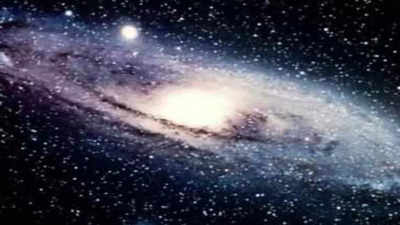- News
- India News
- Digitised record of solar observations at KoSO opens new research window
Trending
This story is from February 21, 2023
Digitised record of solar observations at KoSO opens new research window

File photo for representation
NEW DELHI: In a move that may help explore the impact of variations of the Sun on climate and shape up future plans for space exploration, Indian researchers have digitised the world's longest and homogenous records of sunspot observations taken from one of the oldest astronomical observatories, Kodaikanal Solar Observatory (KoSO) - a field station of the Indian Institute of Astrophysics (IIA), Bengaluru.
The digitised record of solar observations over more than 100 years (1904-2017), recorded in photographic plates/films, can help scientists around the world to peek into the past and predict the future of the life-giving star. Interestingly, these observations were taken with the same setup over this entire time period which makes this data unique and best suitable for long-term solar variability studies.
"This updated sunspot area series covering nearly 115 years (1904–2017) is being made available to the community and will be a unique source to study the long term variability of the Sun," said six researchers in their joint paper published in the journal Frontiers in Astronomy and Space Sciences.
Flagging their study, the ministry of science & technology on Monday said these historical observations can enable scientists to understand the behaviour of the nearest star in its earlier phase, and based on that, they could predict its future. "Understanding the fate of the Sun will shape our plans for space exploration, as the Sun is the driver for our space weather conditions," it said.
The other five authors of the paper are Bibhuti Kumar Jha, Manjunath Hegde, Aditya Priyadarshi, Sudip Mandal and B Ravindra.

The digitised record of solar observations over more than 100 years (1904-2017), recorded in photographic plates/films, can help scientists around the world to peek into the past and predict the future of the life-giving star. Interestingly, these observations were taken with the same setup over this entire time period which makes this data unique and best suitable for long-term solar variability studies.
"This updated sunspot area series covering nearly 115 years (1904–2017) is being made available to the community and will be a unique source to study the long term variability of the Sun," said six researchers in their joint paper published in the journal Frontiers in Astronomy and Space Sciences.
Flagging their study, the ministry of science & technology on Monday said these historical observations can enable scientists to understand the behaviour of the nearest star in its earlier phase, and based on that, they could predict its future. "Understanding the fate of the Sun will shape our plans for space exploration, as the Sun is the driver for our space weather conditions," it said.
“Artificial Intelligence will be used to extract data from hand-drawn pictures and photographs. This will form a set of one of the oldest, rare, continuous solar data that will be useful to researchers from different corners of the world,” said Dipankar Banerjee, director of the Aryabhatta Research Institute of Observational Sciences (Aries), Nainital, Uttarakhand, one of the six authors of the paper.
The other five authors of the paper are Bibhuti Kumar Jha, Manjunath Hegde, Aditya Priyadarshi, Sudip Mandal and B Ravindra.
End of Article
FOLLOW US ON SOCIAL MEDIA











